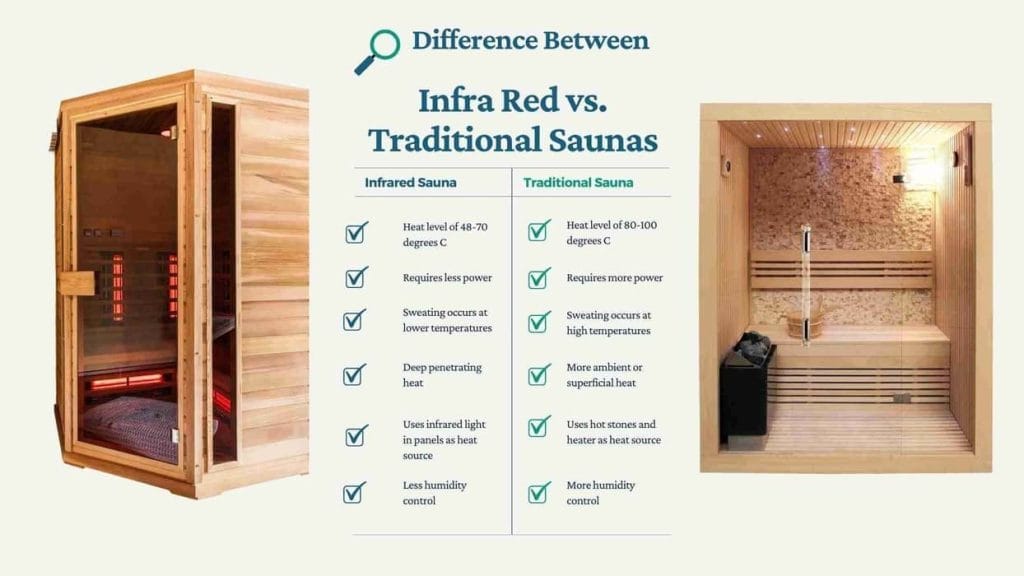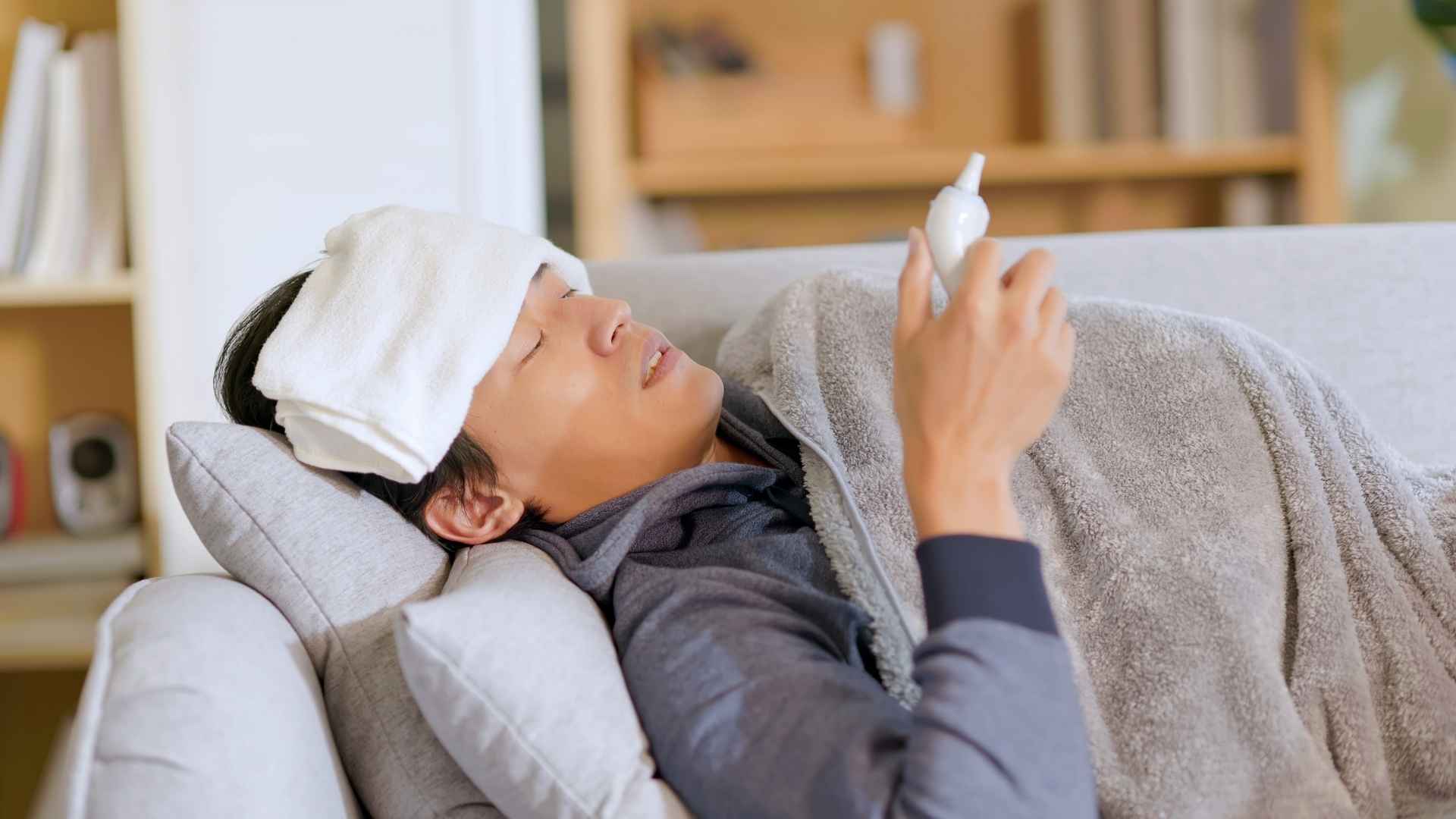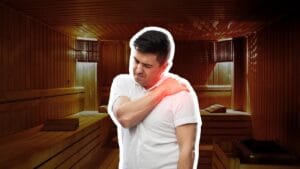This article has been medically reviewed by doctors to ensure it provides accurate, reliable, and up-to-date health information. We only use credible sources to support our content.
Saunas are often praised for their health benefits, from improved circulation to enhanced relaxation. But when it comes to colds, the benefits and risks need to be carefully weighed. While using a sauna can help prevent colds by boosting your immune system, it’s not always safe to use one while you’re sick, especially if you have a fever.
This article explores how saunas can be a helpful tool for preventing illness, how they affect cold symptoms, and what practices to follow if you decide to use a sauna while recovering from a cold.
Can Saunas Help Relieve Cold Symptoms?

Yes, saunas can temporarily relieve some cold symptoms, like nasal congestion and muscle soreness. The heat helps open up airways and relax tense muscles. Studies suggest that the heat and humidity in a sauna may help clear mucus from the sinuses, providing short-term relief from congestion. Saunas also improve blood circulation, which can ease muscle aches. However, it’s important to remember that while saunas may help with these symptoms, they don’t cure colds.
Their effects are limited to temporary relief rather than addressing the virus itself.
How Do Saunas Improve Your Immune System?
Saunas improve the immune system by stimulating the body’s natural defense mechanisms. When you use a sauna, your core body temperature rises, mimicking a mild fever. This increase in heat triggers the production of white blood cells, which are essential for fighting infections. Additionally, saunas stimulate the production of heat shock proteins, which protect cells from stress and help repair damaged tissues.
Improved circulation is another benefit, as it enhances the delivery of oxygen and nutrients throughout the body, supporting immune function. Regular sauna use can strengthen your immune system, helping prevent illnesses like colds and flu.
Saunas also stimulate the production of heat shock proteins, which help protect cells and boost overall immunity.
Is It Safe to Use a Sauna When You Have a Cold?
No, it’s generally not recommended to use a sauna while experiencing cold symptoms, especially if you have a fever. The increase in body temperature caused by the sauna can exacerbate dehydration and fatigue, making symptoms worse. Additionally, if you have respiratory symptoms like a cough or sore throat, the dry heat from a sauna may irritate your airways.
While some people may experience temporary relief, medical experts advise against using saunas when you’re already sick, as your body is working hard to fight the infection.
Can Saunas Help Prevent Getting a Cold?
Yes, regular sauna use can be an effective preventive measure against colds. Research published in a study involving frequent sauna users found a reduced risk of catching colds and respiratory infections. The immune-boosting effects of saunas, including increased white blood cell production and improved circulation, help the body fend off viruses.
Furthermore, the relaxation and stress-relief benefits of saunas can also play a role in prevention, as chronic stress is known to weaken the immune system. Incorporating saunas into your routine may help reduce the likelihood of getting sick, particularly during cold seasons.
Do Saunas Make Cold Symptoms Worse?
Yes, using a sauna could worsen some cold symptoms, particularly dehydration and fatigue. Saunas cause sweating, which can deplete your body of fluids. If you’re already dehydrated from cold symptoms, this can make you feel worse. Additionally, the high heat can strain your body further when it’s already weakened by illness. Studies suggest that saunas are best avoided during acute illness, as the body needs to focus on recovery, and additional heat stress could hinder that process.
If your symptoms include a cough or sore throat, the dry heat may irritate these conditions further.
How Long Should You Stay in a Sauna If You Have a Cold?
If you choose to use a sauna with mild cold symptoms (without fever), it’s best to limit your session to 10-15 minutes. Studies indicate that short sauna sessions may offer some symptom relief without putting too much strain on the body.
However, it’s important to stay hydrated and exit the sauna immediately if you feel dizzy or overly fatigued. Taking short breaks outside the sauna and allowing your body to cool down before re-entering is also a good practice.
Your body is already working hard to fight the cold, so avoid lengthy or intense sauna sessions.
Also Read: Sauna Recommended Temperature and Time
Should You Avoid Saunas When Experiencing a Fever?
Yes, you should avoid saunas if you have a fever. Research shows that saunas raise your core temperature, and if you’re already running a fever, this could lead to overheating, dehydration, and increased fatigue. Fevers are the body’s way of responding to infections, and adding more heat from a sauna can worsen your condition. Instead of using a sauna, focus on resting and keeping your body hydrated.
Once your fever has subsided, you can consider using a sauna again to help with congestion or muscle aches, but only if you feel physically up to it.
What Type of Sauna is Best for Colds?

When choosing the best type of sauna for managing cold symptoms or helping with recovery, there are two main types to consider: traditional saunas and infrared saunas. Each has distinct characteristics that can impact your experience, especially when you’re feeling under the weather.
Traditional Saunas
Traditional saunas use high heat, often between 150°F and 195°F (65°C to 90°C), to warm the air around you. The humidity in a traditional sauna can be adjusted by pouring water over heated rocks, which produces steam. This type of sauna is great for clearing congestion, as the moist heat helps to loosen mucus in the respiratory system. If you have a stuffy nose or sinus pressure, the steam can provide temporary relief by helping you breathe more easily.
However, traditional saunas may not be ideal for everyone, particularly if you’re already feeling fatigued from a cold. The high temperature can place additional stress on your body, which may exacerbate feelings of weakness. Additionally, the intense heat can quickly lead to dehydration, especially if you’re not drinking enough water. If you’re using a traditional sauna, keep your session short and make sure to stay hydrated.
Infrared Saunas
Infrared saunas work differently. Instead of heating the air, infrared saunas use infrared light to directly heat your body at a lower temperature range, typically between 120°F and 140°F (48°C to 60°C). This makes them more comfortable to use, especially if you’re already feeling drained from a cold. The gentler heat allows for longer, more relaxing sessions without the same intensity of sweating as traditional saunas.
One of the key benefits of infrared saunas is their ability to penetrate deeper into the skin and muscles, promoting better circulation and reducing inflammation. This makes them ideal for easing muscle aches and pains, which are common symptoms of colds. Infrared saunas can also help improve immune function by stimulating the production of white blood cells, which are crucial for fighting infections.
The lower temperature and dry heat make infrared saunas a better option if you’re sensitive to high heat or if the steam in traditional saunas irritates your throat or airways.
Best Sauna Practices When You Have a Cold
If you’re considering using a sauna during recovery from a cold, follow these best practices to stay safe and support your body’s healing process:
- Stay Hydrated: Drink plenty of water before, during, and after your sauna session to avoid dehydration, which can worsen cold symptoms.
- Limit Session Length: Keep sessions short, around 10-15 minutes, to avoid overstressing your body.
- Take Breaks: Step out of the sauna to cool down if you feel fatigued or overheated. Breaks between sessions are key.
- Monitor Symptoms: Listen to your body and stop immediately if you feel dizzy, lightheaded, or overly tired.
- Avoid Intense Heat: Opt for lower temperatures if possible, especially if you’re feeling weak from the cold.
- Choose the Right Type of Sauna: Infrared saunas may be a better option as they use lower heat and penetrate the body more gently than traditional saunas.
- Don’t Use a Sauna if You Have a Fever: Saunas elevate body temperature, which can exacerbate a fever and make you feel worse.
- Rest and Recover: Pair sauna use with plenty of rest and fluids, and remember that saunas are a complementary tool, not a cure for colds.
Conclusion
In conclusion, while saunas can provide some relief from cold symptoms like congestion and muscle aches, they are best used as a preventive measure rather than a remedy when you’re already sick. Regular sauna use can boost your immune system, reducing your chances of catching a cold.
However, it’s important to avoid saunas if you have a fever, as the heat can make symptoms worse. Choosing the right type of sauna, such as an infrared sauna, can offer gentler benefits, especially if you’re feeling fatigued.
Always stay hydrated and listen to your body during sessions.




